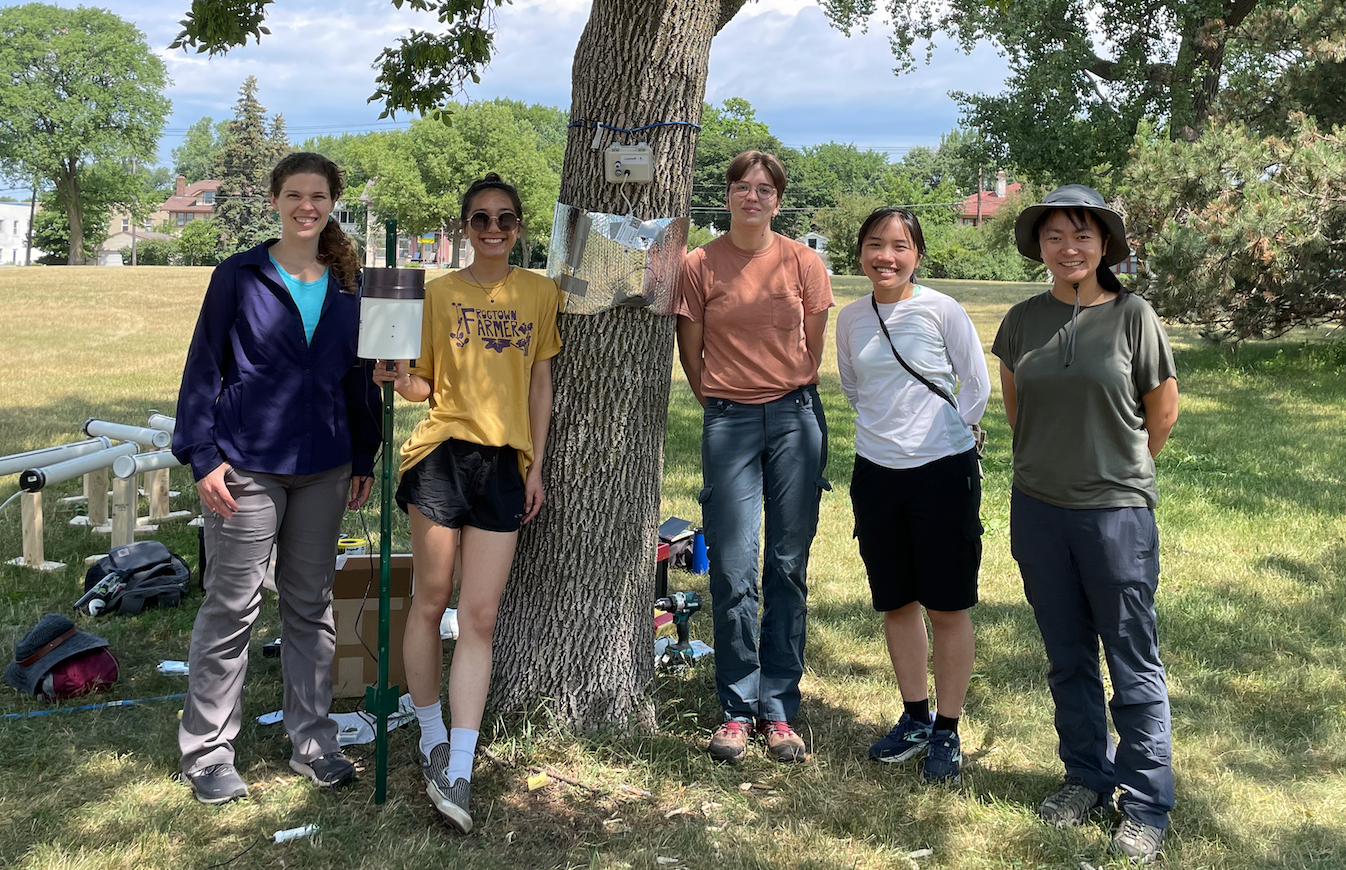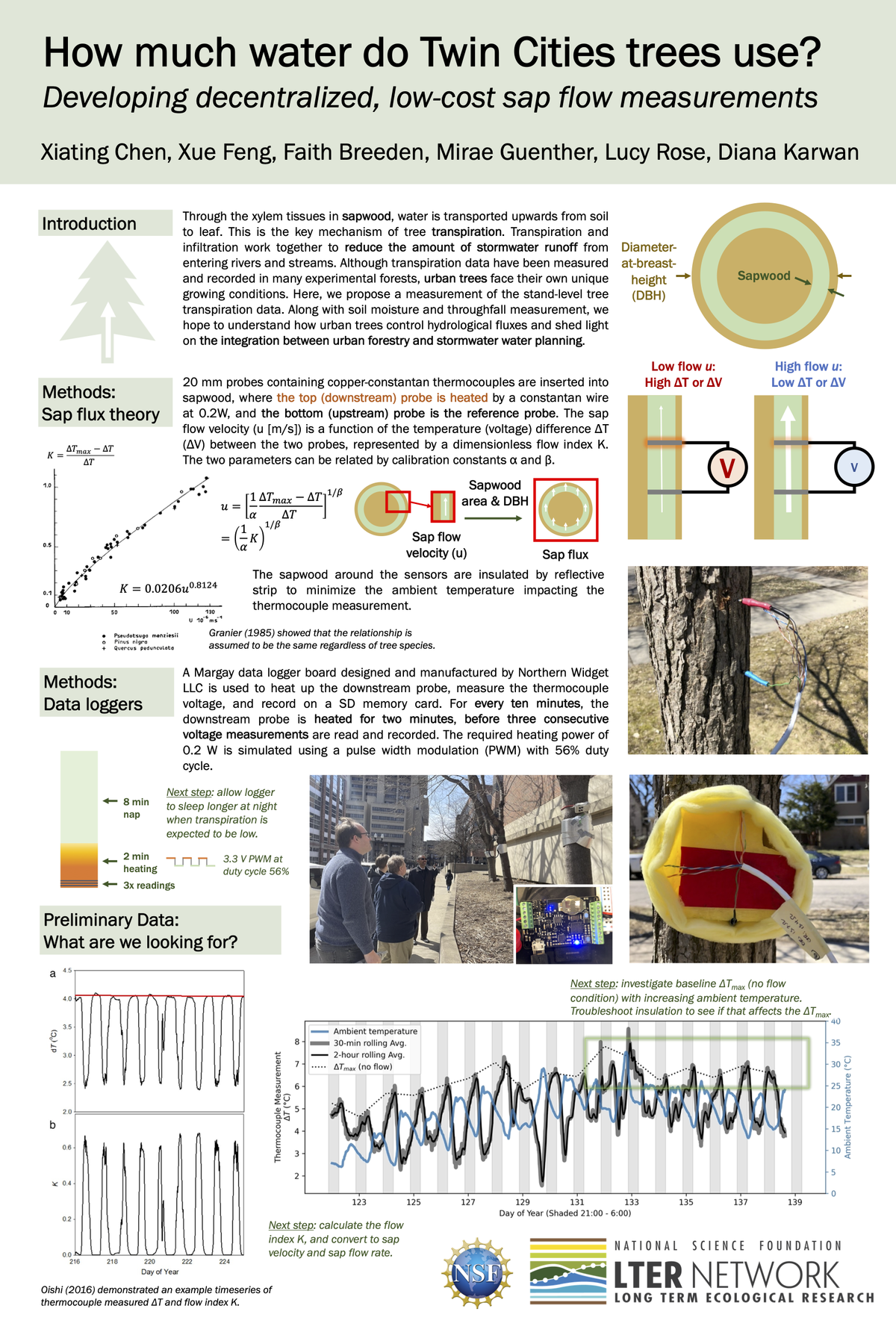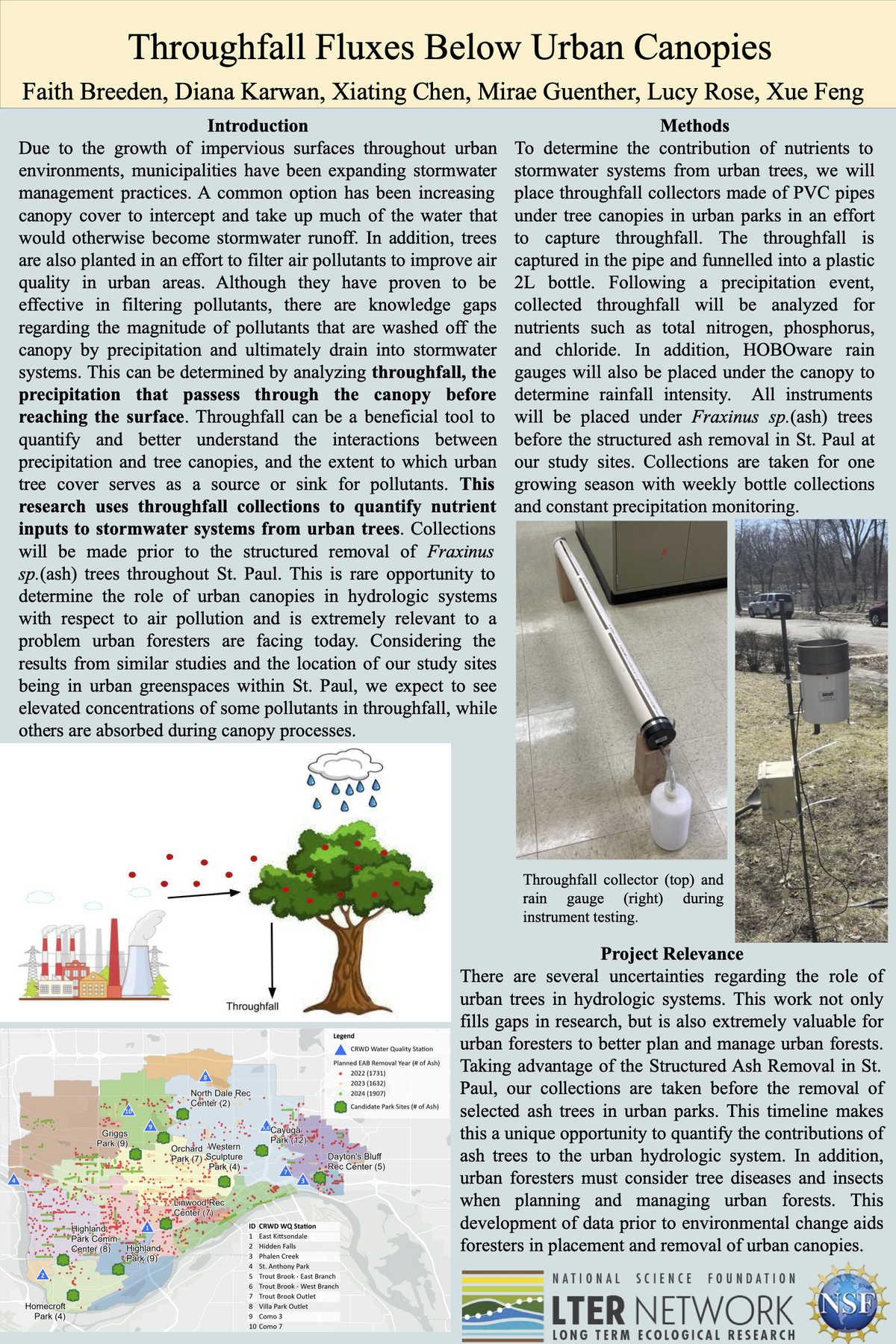
Led by: Xue Feng and Tracy Twine
Urban watersheds can reduce flooding by rapidly moving water downstream or providing locations where water can soak into the ground, and can cool neighborhoods through shading and evaporation. They are also important in carrying pollutants downstream. However, the capacity for urban watersheds to provide benefits to urban residents depends in part on the spatial arrangement of a complex patchwork of “green” natural and semi-natural areas and “grey” (built) infrastructure -- where these patches are placed within the landscape and how they are connected. To better understand how urban watersheds function, we are collecting data on the flow of water through urban watersheds and how that flow depends on the nature of this complex patchwork. We also are using computer models and tools to help identify tradeoffs between the benefits and burdens that urban watersheds provide to urban residents, and how they change under land management and climate scenarios.

